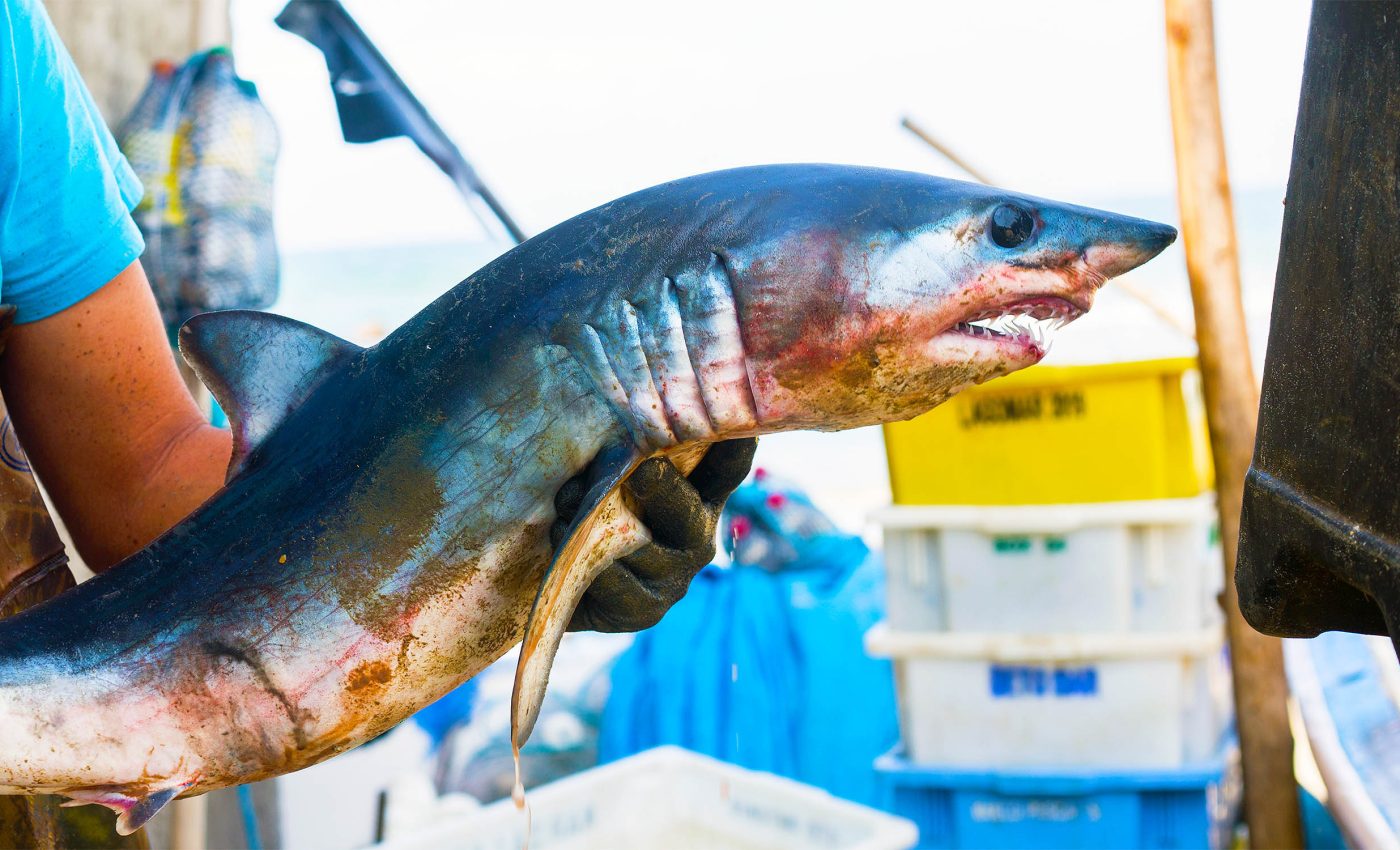
"Cocaine sharks" found off the coast of Brazil - strange but true tale of ocean pollution consequences
Hollywood once spun a wild yarn about “Cocaine Bear,” a hapless black bear that gorged itself on lost narcotics. It turns out the plot has a saltwater sequel. In coastal Brazil, “cocaine sharks” – petite Brazilian sharpnose sharks – are cruising through drug-laden surf, minding their own business – and absorbing far more than sunshine.
The tale sounds like clickbait, yet it is anchored in hard numbers. Seawater sampled near the crowded Port of Santos – Latin America’s busiest harbor – contained cocaine concentrations on par with caffeine.
Those waters eventually lap against popular beaches only a few miles away. Juvenile sharks captured for study later returned chemical readings that would make any toxicologist wince.
Sharks on cocaine? Believe it!
Cocaine, small sharks, big questions
Barely 20 inches from snout to tail, Rhizoprionodon lalandii hardly fits the image of a fearsome predator. These nimble hunters weigh less than a quart of milk yet punch above their size in local food webs.
They became the focus of marine toxicologist Gabriel de Farias Araujo and ecotoxicologist Enrico Mendes Saggioro at Brazil’s Oswaldo Cruz Institute after a late-night brainstorming session about invisible pollutants and overlooked species.
The researchers spent weeks prowling estuaries in small boats, setting gill nets at dawn and dusk when sharpnoses patrol the shallows. Thirteen juvenile and young adult sharks were taken back to the lab, packed in ice.
Chromatography showed every fish carried cocaine plus hefty doses of benzoylecgonine, the drug’s chief metabolite.
Levels dwarfed those seen in most aquatic surveys, pointing to chronic exposure rather than a one-off snort from floating contraband.
How drugs pollute ocean waters
Pharmaceutical pollution is a worldwide headache, but Brazil faces an outsized share because it is a major transit hub for cocaine.
Much of the drug winds up in wastewater after human use, slipping past treatment plants that were never designed to neutralize narcotics. In hot, crowded cities, a single facility may discharge millions of gallons of partially treated effluent each day.
Add in discarded bales tossed overboard by smugglers and residue from clandestine labs hidden along rivers, and the result is a steady trickle of cocaine into mangroves and estuaries.
Tidal mixing and mangrove roots slow water flow, allowing chemicals to linger. By the time currents, wind, and rain have done their spreading, fish, crustaceans, and filter feeders are marinating in a diluted yet persistent cocktail.
What cocaine does underwater
Exactly how cocaine tweaks a shark’s physiology remains an open question, but parallel studies on other species offer troubling clues.
Zebrafish embryos exposed to tiny doses show reduced cell vitality and greater DNA fragmentation, hinting at developmental risks.
In European eels, swimming through cocaine-tainted water alters muscle performance and accelerates exhaustion, making long migrations harder.
Sharks may experience similar stress. Even subtle interference with neurotransmitters such as dopamine and serotonin could blunt the electroreception they use to find prey.
Over time, that handicap translates into slower growth and lower survival, eroding populations already pressured by overfishing and habitat loss.
Loading the food chain
Cocaine is not picky about hosts. Once it slips into the water, it is readily absorbed by plankton and small invertebrates hovering at the base of the food web.
Brazilian sharpnose sharks, prowling for sardines and shrimp, take in a double dose: the drug dissolved in seawater and the bolus stored in their prey.

The study recorded tissue concentrations up to one hundred times higher than levels measured in other marine organisms.
Such biomagnification means that apex predators – larger sharks, dolphins, even seabirds – could be accumulating unexpected pharmaceutical payloads without leaving obvious forensic clues.
The wider pollution picture
Cocaine is only one piece of a sprawling chemical mosaic. Researchers have spotted antidepressants in Great Lakes perch, epilepsy drugs in British river otters, and methamphetamines in Czech trout.
Each compound nudges behavior and metabolism in its own way, yet they mingle in the same waterways and sometimes interact.
Warmer seas driven by climate change add another wrinkle by speeding biochemical reactions and altering currents.
Altered predator-prey dynamics, skewed reproductive cycles, and shifts in migration routes can ripple outward, reshaping entire ecosystems faster than regulators can adapt.
Keeping cocaine away from sharks
Araujo and Saggioro argue that sharper monitoring is the first step toward relief.
Upgrading wastewater plants with activated carbon filters, cracking down on illegal dumping, and tracing pollution hot spots with environmental DNA surveys would help tighten the tap before drugs reach the open ocean.
Roughly one-third of shark and ray species already teeter on the edge because of overfishing. Pharmaceutical runoff piles on yet another hurdle.
Curbing drug pollution is less about finger-wagging at individual users and more about safeguarding coral nurseries, fisheries, and the coastal communities that depend on them.
One ocean, shared responsibility
The presence of cocaine in Brazilian sharpnose sharks is more than a catchy headline. It is a plain reminder that human habits seep into the sea in ways we seldom notice.
Cleaning up after ourselves should never be looked at as just a charitable act of kindness for wildlife.
Not only is it our responsibility as the dominant species on the planet, it’s an investment in the stability of ecosystems, biodiversity, and global food chains that humans ultimately rely on. The ocean does not recognize national borders, so every watershed matters.
Solving the problem will take cooperation from chemists, wastewater engineers, legislators, and everyday citizens.
Until then, the next time a ripple of seawater brushes your ankles, keep in mind the curious little shark beneath the surface – and the silent stimulant drifting alongside it.
The full study was published in the journal Science of The Total Environment.
—–
Like what you read? Subscribe to our newsletter for engaging articles, exclusive content, and the latest updates.
Check us out on EarthSnap, a free app brought to you by Eric Ralls and Earth.com.
—–













